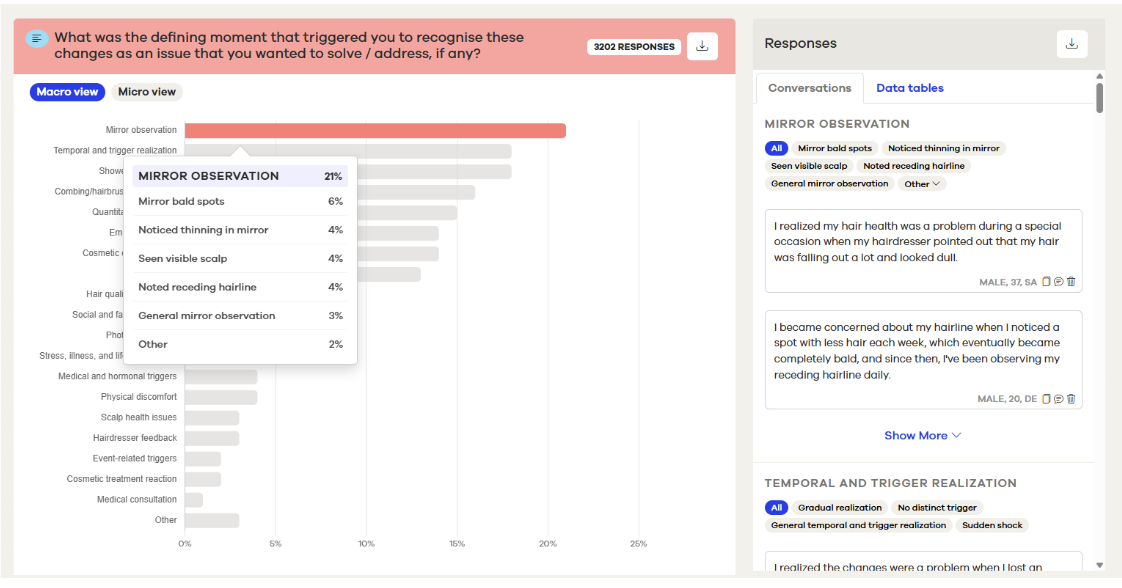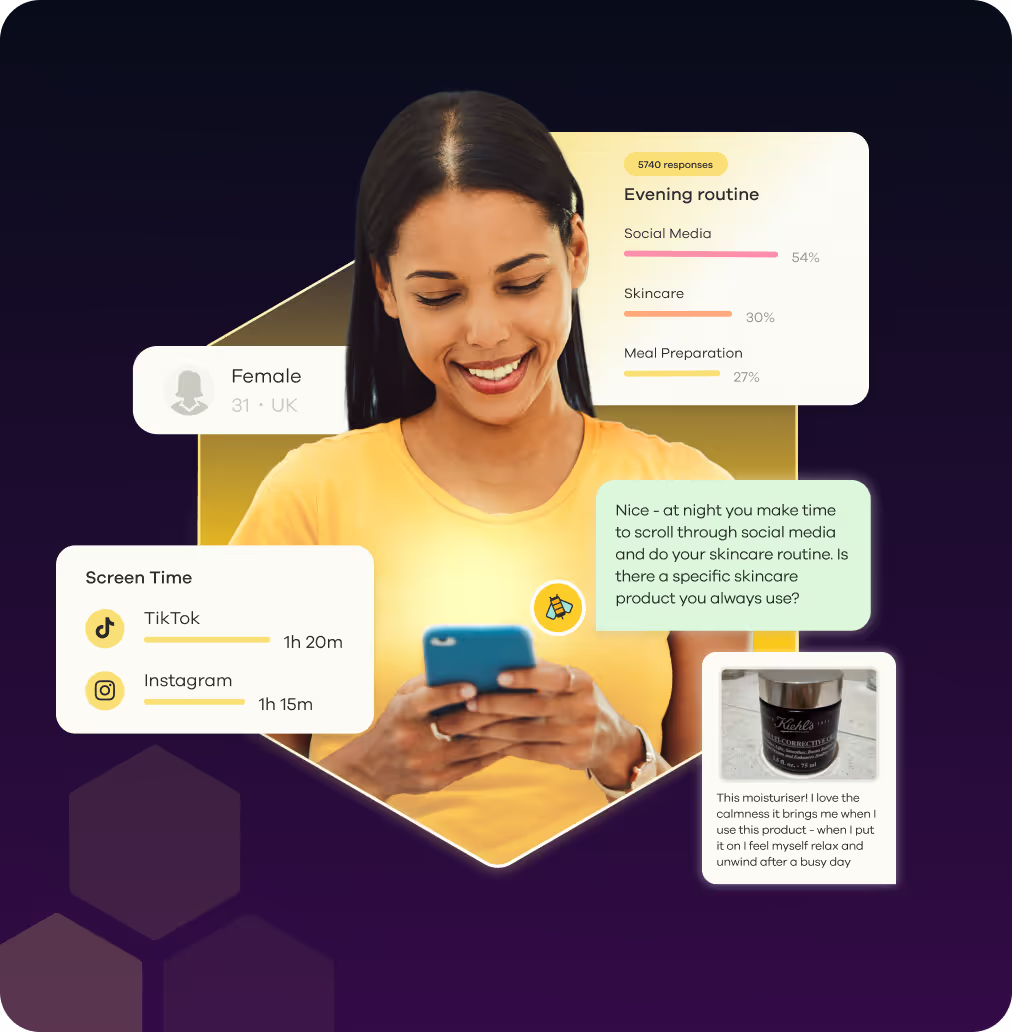Date: 24/6/2025
Today, we are thrilled to announce the launch of our latest feature: Multi-level open text coding. This new addition is designed for clients who rely on precision behind their decision making. Quantifying open text responses into multiple levels of bespoke answer groupings means that we can easily see the overarching story while never losing sight of the rich granularity that insight is built on.
When nuance is lost in numbers
Rows and rows of rich open text responses are often impossible to work with. For years we found that the conversational data we were collecting from people was better than our ability to actually process and make sense of it. Often respondents were pouring their hearts out about how groundbreaking or unique a concept being tested in one of our innovation surveys was, and we would see this rich verbatim reduced to 20% = ‘loved it’ in a final report - losing the nuance and insight into how they actually felt, even though, it was in their original answer!
Researchers and clients alike would have no choice but to trawl through raw open text answers to understand in a qualitative sense what was really going on behind the numbers.
This needed to change. We had to get more out of what we had in an accessible, precise, way.
Uncover the story within the stats
The multi-level coding capability addresses this challenge by providing a nested macro and micro view of all coded data, directly alongside original verbatim.
Anyone can see the key macro themes coming out of the conversations, while simultaneously having the ability to deep dive a layer down into micro themes that make up those macro codes. Both layers are quantified and supported by direct verbatim so the process is completely transparent and no detail is washed out.

“Having worked for years in and around ops teams charged with processing and reviewing coding quality, I can see this being a watershed moment where we realise how much valuable insight has been washed out over the years. Really I wonder how we ever managed without it.” - James Smith, COO at Streetbees
How it works
Our platform automatically scans and processes conversational responses to each question. Using the client brief and objectives as context, the system identifies a list of relevant macro codes to look for. It then tests these codes bottom up against what it can see in the data, pulling subsets and attempting to micro code them exhaustively to cross check its work.
Once it has identified and labelled all micro codes, it nests them within the relevant macro theme and produces a multi-level chart.
The system can then draw on either the macro or micro data when analysing what it is seeing to make sense of the data.
Your insights are ready: How to explore them
- Any open text responses in our interactive report dashboards will automatically be processed as charts with multi-level taxonomies.
- The default view will show the macro (highest level) codes that have been derived from the open text.
- Hovering over any macro code will reveal the micro sub codes that sit within that macro code bucket.
- Users can toggle the chart to show more granular micro codes by clicking the macro / micro buttons below the question header.
- Clicking on any of the bars will scroll the verbatim bar on the right hand side so you can easily dip into the raw richness of respondents' own language
Multi-level coding is now live in all Streetbees interactive dashboards. Get in touch to explore how you can capture the nuance the numbers in your next project.





